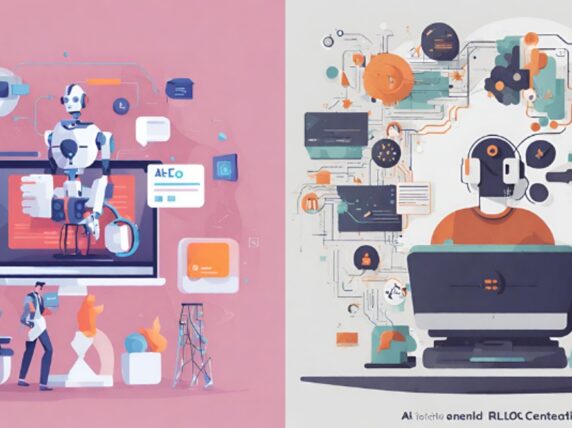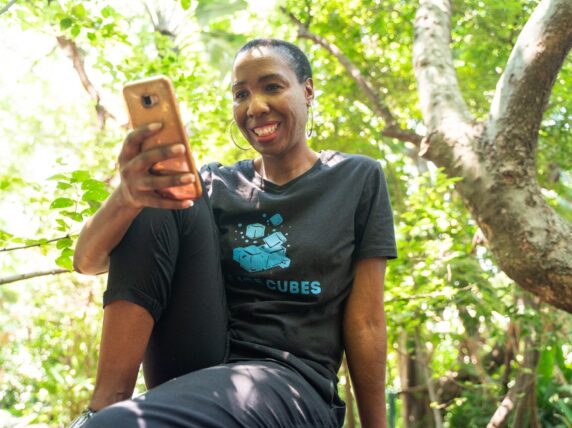AI for rural health: Five opportunities INGOs can’t afford to miss
In the remote corners of the world, where access to healthcare feels like a distant dream and the divide between urban and rural health grows ever wider, a silent revolution is underway.
With Artificial Intelligence (AI) and rural health, there lies an unprecedented opportunity for the international development sector to break down the walls of disparity and deliver hope to communities long overlooked by modern medicine.
As we stand at the crossroads of innovation and responsibility, we must grapple with a pivotal question: Are we prepared to seize five transformative AI opportunities that could redefine the very fabric of rural health, or risk being left behind in the crowded march towards universal health coverage?
1. AI-Powered Telemedicine Platforms
As a sector, we can collaborate with telecommunications companies to develop and deploy low-bandwidth, AI-powered telemedicine platforms that can operate effectively in rural areas with limited connectivity.
These platforms can be designed to be accessible via basic smartphones and feature simplified user interfaces for both patients and healthcare providers. By financing platform development, training local healthcare workers, and fostering partnerships with urban healthcare institutions, we can facilitate seamless remote consultations and referrals, ensuring no community is left behind in accessing essential medical services.
2. Mobile Health Applications
We can invest in young entrepreneurs and collaborate with tech startups to create AI-driven mobile health applications, like M-Tiba in Kenya. These apps could provide comprehensive healthcare services, from maternal and child health to chronic disease management, empowering rural populations to take control of their health through personalised and accessible digital solutions.
We can design those platforms with a human-centric approach, enabling them to work offline and feature interactive educational content, symptom checkers, and appointment scheduling functionalities.
Through collaboration with national governments, businesses and NGOs, we can establish national entrepreneurship incubation programs to provide comprehensive financial and technical support for promising young entrepreneurs from rural communities, enabling them to develop and scale their mobile health solutions, which in turn empower individuals to proactively manage their health.
3. Predictive Analytics and Diagnostics
We should consider supporting the deployment of AI-powered predictive analytics and diagnostics solutions through capacity building and technology transfer initiatives.
We can partner with academic institutions and AI startups to adapt existing algorithms, such as the TB Detection Tool in India, for disease prediction and early detection in resource-limited settings. We can also provide training to local healthcare workers on data collection, analysis, and interpretation, and invest in laboratory infrastructure and diagnostic equipment to support AI-driven diagnostics.
Partnering with governments ensures the seamless integration of predictive analytics into existing healthcare frameworks, contributing to long-term sustainability.
4. Remote Monitoring and Wearable Devices
Envisage collaborating with medical device manufacturers to introduce AI-driven remote monitoring and wearable devices, similar to the Pumani CPAP machine in Malawi, to rural and semi-urban communities. These innovations enable continuous patient monitoring with conditions like respiratory distress and acute cardiovascular disease, facilitating timely interventions and significantly improving health outcomes.
Through funding for device procurement and distribution, workforce training on device installation and maintenance, and through community awareness campaigns, we can ensure widespread adoption and support networks for proactive and affordable access to wearable health technologies.
5. Healthcare Robotics and Automation
We should promote and invest in the adoption of AI-driven robotics and automation solutions in the national health systems of the Global South, like the Smart Glasses for Cataract Surgery in Nepal. We can do this by advocating for digital-inclusive international health policies and investing in relevant private-sector initiatives.
We can partner with robotics companies and academic institutions in the Global North to transfer and deploy cost-effective robotic-assisted surgical systems and autonomous medical drones to Global South communities. Through providing funding for research and development, training local healthcare workers on robotic-assisted procedures, and working with regulatory authorities to streamline approval processes for healthcare robotics, the international community can spearhead an inclusive delivery of AI technologies to the most vulnerable populations of the Global South and beyond.
The convergence of AI and the international development sector, bolstered by investments in local talent and entrepreneurship, holds the promise of bridging the historic urban-rural healthcare divide. As someone who has been actively involved in spearheading social enterprises and advanced research in AI and digital health, including contributions to The Lancet and WHO, I have observed firsthand the transformative potential of these technologies in revolutionising healthcare delivery.
Through AI-powered innovations and strategic partnerships, we will witness the dawn of a new era in rural health, where every underserved human is empowered with democratised access to quality healthcare. Together, let us forge a path towards a more sustainable and equitable AI-driven international development.
Category
News & Views



